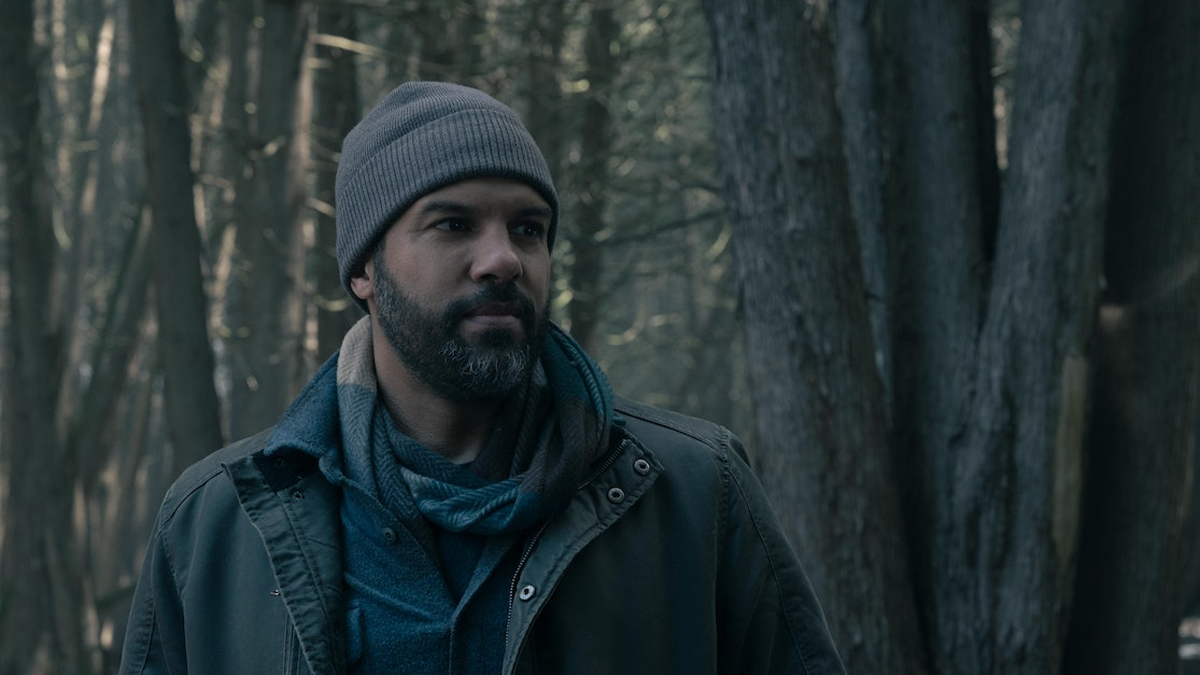Warning: contains spoilers for The Handmaid’s Tale season 5 episode 6 ‘Together’.
Road trip! There was a brief moment in The Handmaid’s Tale’s first season, right after Fred Waterford and the other Commanders were blown up in that Red Center explosion, when this story move felt inevitable. June and Serena: two enemies cast together against a common foe, Thelma and Louise-ing it on the run from Gilead together in the ultimate act of female solidarity. (Okay, solidarity is pushing it. The stage though, is at least set for a ceasefire now that Serena appears to be in labor and June has previous when it comes to delivering babies alone in the wilderness.)
It never happened because, like all believers in the just-world fallacy, Serena’s always felt righteously insulated from adversity. She’s glimpsed Gilead’s horrors – when a Handmaid with a cut-out tongue sat at her kitchen table, when teenage Eden was drowned, when Fred beat her with a belt, and when she lost a finger – but she never faced them front-on. Now, thanks to the Wheelers, Serena has experienced Gilead from the factory floor, and surprise surprise, when she’s not the boss, she’s not a fan.
It’s proof of Serena’s narcissistic lack of empathy that her own freedom only had to be curtailed for her to want to get the hell out of Dodge. The Wheelers’ home became a Rosemary’s Baby-style nightmare as she became the mirror of June in season one – imprisoned, controlled, patronized, summoned to the Commander’s study for a fireside interview (no Scrabble this time) and subjected to a skeevy medical.
Remember June’s doctor offering to impregnate her in season one? Serena’s ultrasound was her version. No sooner had the eligible Dr. Landers wiped the lube from his surgical gloves after massaging Serena’s perineum than he was asking her out to dinner. There isn’t enough vomit in this world. Unsettling as that was, Serena’s was still the Handmaid-lite experience. Her body and sexual autonomy were no longer her own, but she wasn’t forced to take part in The Ceremony, a Salvaging or any of Gilead’s most brutal rituals. And still she wanted out.
One of those brutal rituals worked in our favor this episode, as the odious Warren Putnam (a terrific, off-putting turn from actor Stephen Michael Kunken) was finally strung up on The Wall. Putnam’s punishment was welcome, obviously, but lacked the visceral satisfaction of Fred’s death. Styling Nick (congratulations on the baby news, Commander Blaine) and Lawrence as heroic hit-men felt simplistic for a drama so fluent in moral complexity. What makes those two characters fascinating is their pragmatism as non-believers inside the Gilead system, not macho avenging-angel stunts. Watching Putnam choke on his own blood after one of Esther’s poison chocolates instead of taken down by a Commander’s bullet might have put the power in her hands instead of where it always is – in theirs.
That said, Esther’s story isn’t currently about revenge, it’s about rage. Grace McKenna’s shackled screaming in that hospital bed was – as I’m assured the young people say – a whole vibe. Her Linda-Blair-in-The Exorcist act distilled seasons of The Handmaid’s Tale’s protest into one primal outburst. Faced with the dehumanizing misogyny so meticulously depicted by this drama, Esther’s scream is about as articulate as any of us could hope to be. Her rapist was punished not for assaulting her, but for raping “unassigned property”. Keep screaming, child. We’re screaming along with you.
The pithiest of writer Katherine Collins’ dialogue this episode came in Commander Lawrence’s casual “Where’s the sin here?” when Aunt Lydia reported Putnam’s attack on Esther. Unlike Lydia, Lawrence isn’t under any illusions about the sanctity of Gilead’s rites. He knows that Handmaids are objects for Commanders’ sexual gratification and that The Ceremony has always been bullshit. Sure, Putnam violated Esther, agrees Lawrence, but only technically. That’s the world we’ve built here, doesn’t she see?
Lydia doesn’t see, and it’s hard to imagine what it’ll take for the scales to fall from her eyes. It’ll be some time before we’ll see her and Janine blowing this Popsicle stand and driving off together over the border.
It wasn’t just real-world misogyny that ‘Together’ put on screen. Luke’s savage in-custody beating was a sickening reminder of real-world racist violence enacted by those in authority. Luke stopped resisting almost immediately and still got the blows and kicks and the choke-hold. It was horrible to watch and not at all glossed over by director Eva Vives. Ryan Wheeler’s fascist private army almost killed Luke in a story development that felt frustratingly… inessential.
Criticizing The Handmaid’s Tale for being upsetting viewing is like criticizing the sky for being blue, but the lessons learned from June and Luke’s scenes this week were reiterative instead of revelatory. June’s a trooper, she and Luke are in love, fascists are evil… this we knew. Luke experiencing brutality first hand in his Gilead taster-session was gratuitous, particularly as it all meant nothing plot-wise when he was sent back safely to the border without June in an awkward plot reversal.
The second Serena pointed that gun at June, we knew she would turn it on Ezra (be serious, this is June’s show and there’s a sixth season to go until it ends). Yvonne Strahovski though, did a great job of selling the idea that Serena was improvising. Whatever weird U-turns this story might make, the cast of The Handmaid’s Tale remain unimpeachable. And however forced and repetitive the journey was to get them both into position, Strahovski and Moss together again? No complaints here.
The Handmaid’s Tale airs on Wednesdays on Hulu in the US. It will air on Channel 4 and Prime Video in the UK in October.
